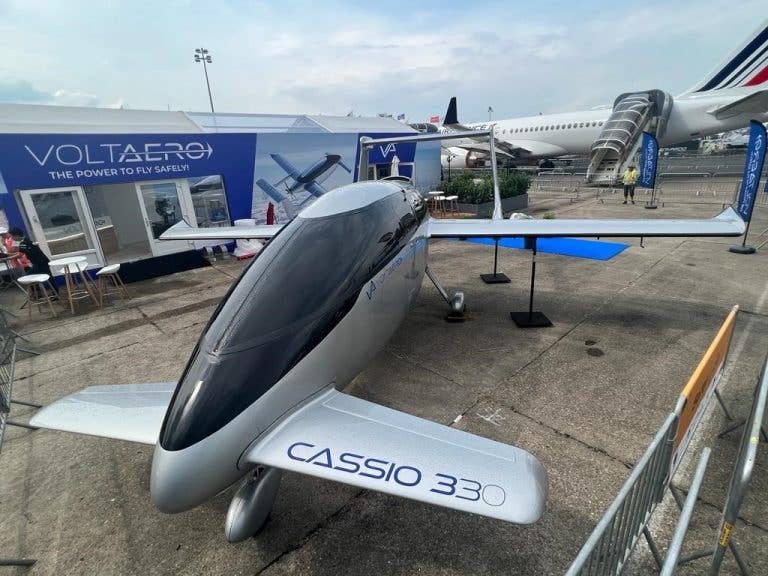VoltAero Unveils Cassio 330 Prototype
VoltAero officially unveiled its first Cassio 330 hybrid-electric aircraft prototype this week at the 2023 Paris Air Show in Le Bourget, France. According to the company, the prototype will be…

Image VoltAero
VoltAero officially unveiled its first Cassio 330 hybrid-electric aircraft prototype this week at the 2023 Paris Air Show in Le Bourget, France. According to the company, the prototype will be powered by a four-cylinder Kawasaki Motors engine and used to validate the airframe configuration and aerodynamics of the design. VoltAero is aiming to fly the aircraft for the first time later this year.
“Today marks a true milestone for electric aviation, as VoltAero delivers on its promise to take an all-new approach for quiet, efficient and eco-friendly transportation that is based on a hybrid design combining thermal and electric propulsion for maximum flight safety,” said VoltAero CEO and Chief Technical Officer Jean Botti. “I want to thank my VoltAero team for its dedication and tireless work in reaching this historic moment, as well as express my appreciation to our suppliers and partners for their commitment to Cassio.”
VoltAero is targeting the second quarter of 2024 to fly its second planned prototype, which will be equipped with the company’s hybrid-electric propulsion unit and an avionics suite from Avidyne. VoltAero says its proprietary propulsion system will use electric motors for power during taxi, takeoff, flight for distances less than 150 km (81 NM) and landing and use an internal combustion engine to extend range, recharge the batteries in flight and provide backup power. As previously reported by AVweb, the company began flight testing with its Cassio 1 test bed aircraft in March 2020. Alongside the five-seat Cassio 330, VoltAero is developing the six-seat Cassio 480 and 12-seat Cassio 600 with an eye toward markets including regional commercial travel, charter, cargo, postal delivery and medical evacuation operations.






